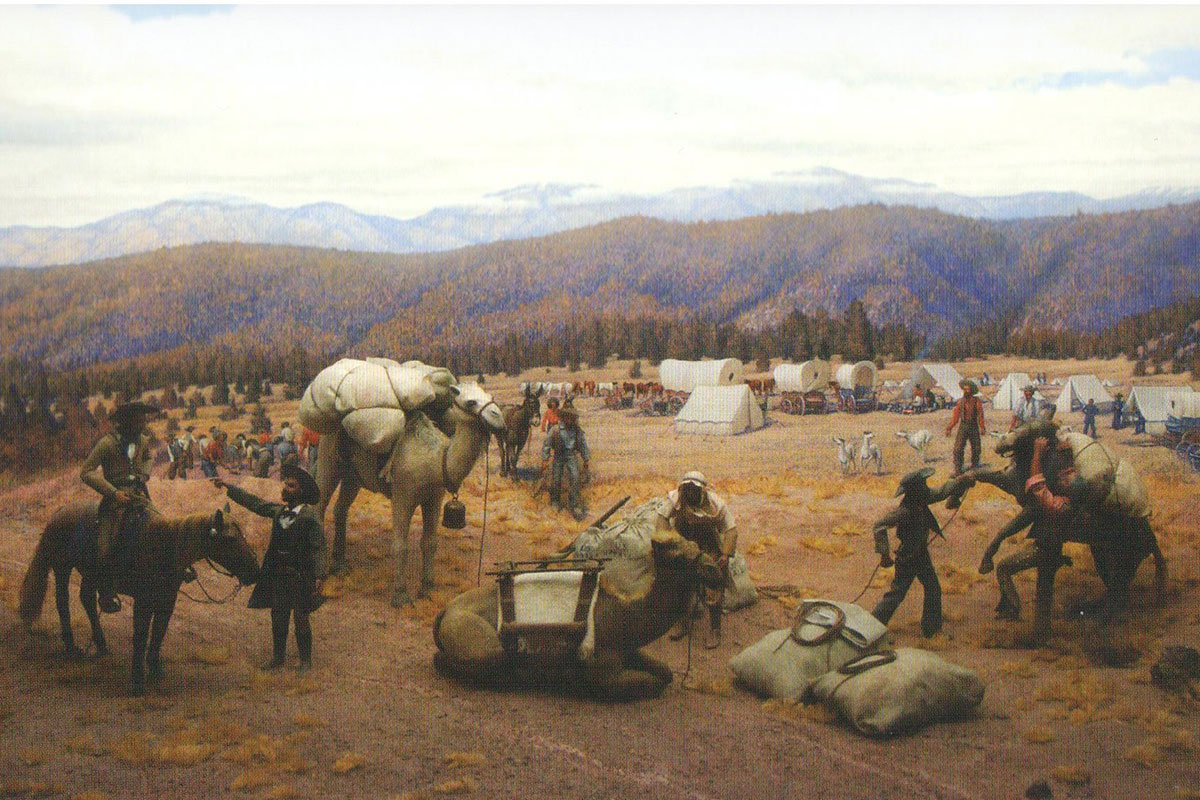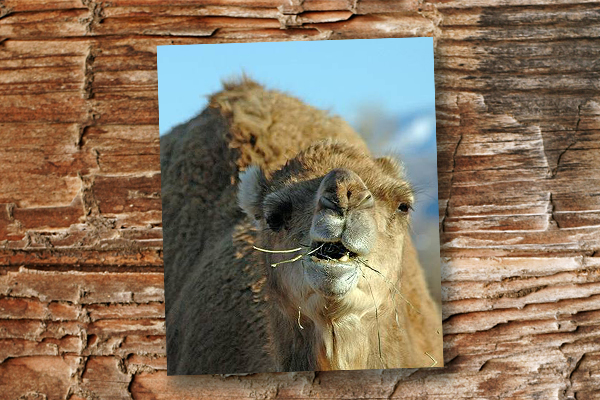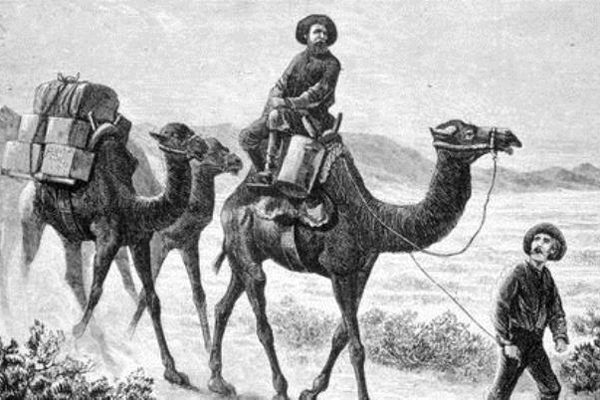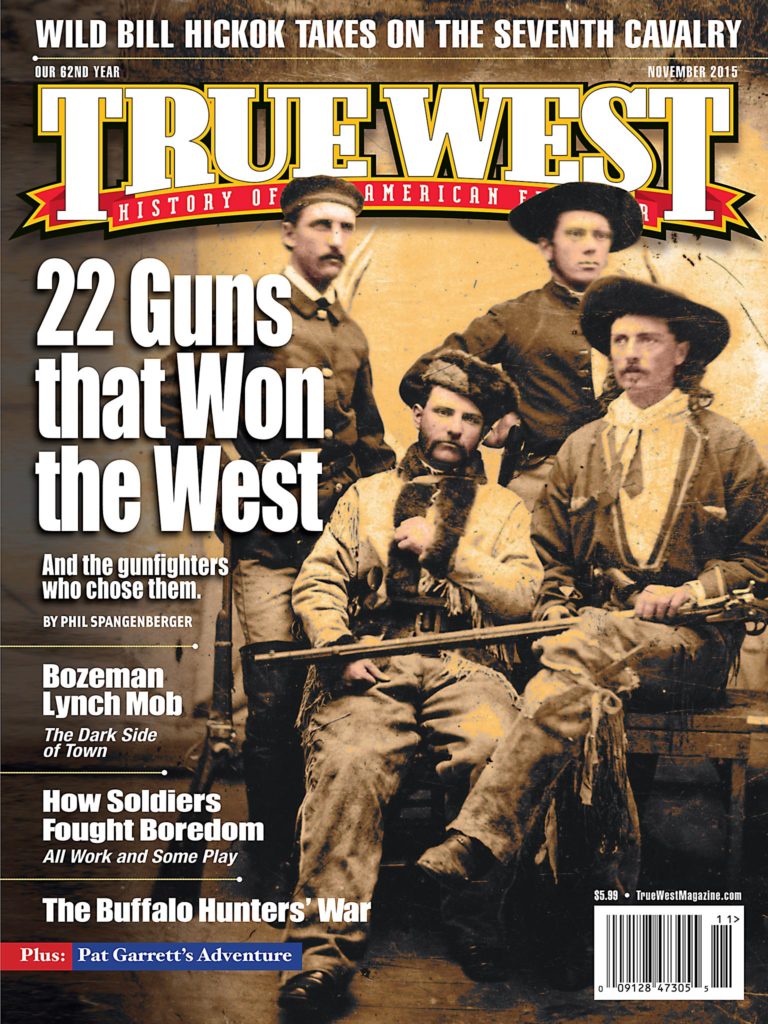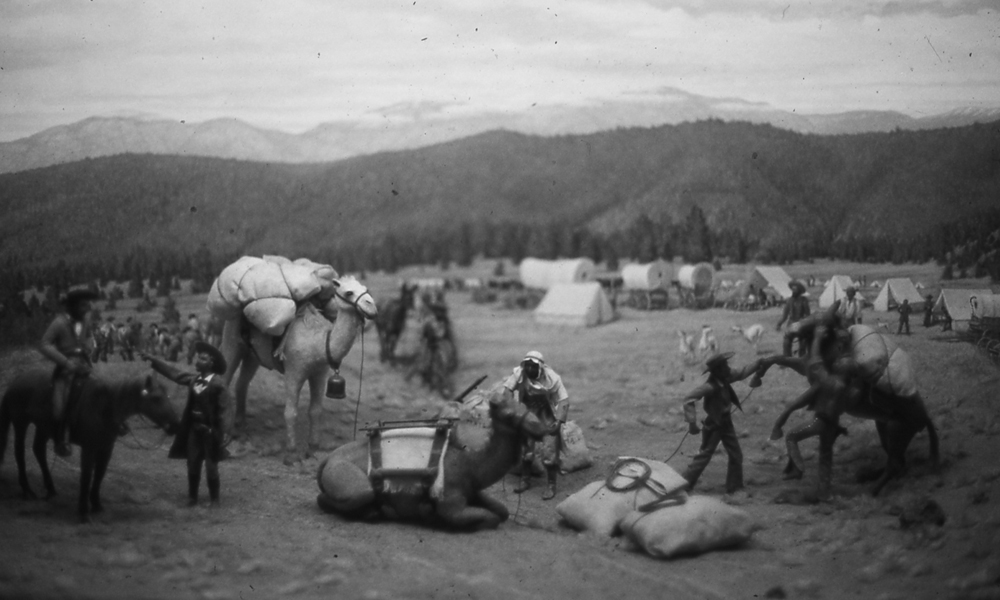
In the years following the Mexican War and the Gadsden Purchase the United States was planning to survey a wagon road along the 35th Parallel that would suffice until railroads could be built. Secretary of War Jefferson Davis wanted to test the feasibility of using camels as beasts of burden across the waterless high desert land.
When the Army Corps of Topographical Engineers imported 34 camels in the spring of 1856 to survey the wagon road from Albuquerque to Los Angeles the mule lobby in Missouri threw a hissy. “Camels,” they said, “were ill-tempered, stubborn and ugly, had bad breath and wouldn’t learn English.”
In reality they didn’t like the competition. However, Lt. Ned Beale, the officer who implemented the camel survey and knew them better than any other American, championed their attributes calling them “lovable and docile.”
He had a hard time convincing others, especially when whole pack trains were known to stampede at the mere sight of the camels.
The beasts passed the supreme test when Beale was challenged to pit his camels against packers’ mules on a 60-mile endurance race. Using six camels against twelve mules, a 2.5 ton load was divided among the camels and two Army wagons, each drawn by six mules. The camels finish the race in two and a half days while the mules took four.
That seemed to settle the argument but the Great Camel Experiment was doomed by the powerful mule lobby and the Civil War looming on the horizon.


